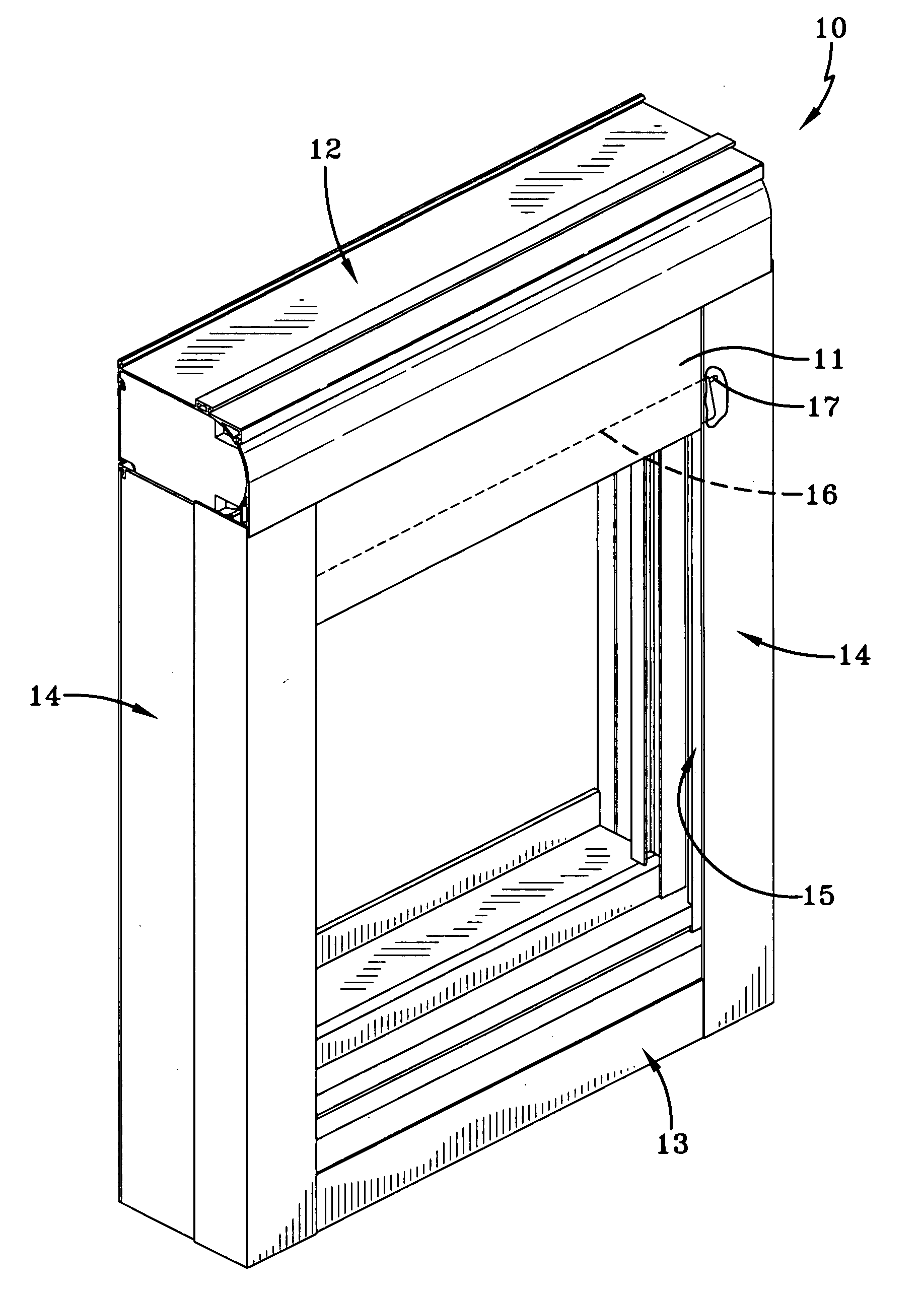Assembly to lock a storm curtain adjacent to an opening in a building
a technology for storm curtains and openings, applied in the direction of curtain suspension devices, door/window protective devices, wing accessories, etc., can solve the problems of disfiguring the exterior of the structure, and affecting the safety of passengers
- Summary
- Abstract
- Description
- Claims
- Application Information
AI Technical Summary
Benefits of technology
Problems solved by technology
Method used
Image
Examples
Embodiment Construction
[0081]A storm curtain assembly made in accordance with the present invention is generally indicated by the numeral 10 and includes a fabric curtain 11 which is selectively movable to obstruct a building opening, such as a window, door or the like. Storm curtain assembly 10 selectively prevents solar heat gain and protects the opening from intrusion due to high winds or windborne debris, such as a window. Curtain 11 is made of a material which is water resistant and which can withstand the forces of wind and airborne debris, as are often encountered in a hurricane or the like. Examples of such fabric are disclosed in U.S. patent application Ser. No. 11 / 190,114 filed on Jul. 25, 2005, to which reference is made for whatever details are necessary to understand the present invention. A locking bar 16, which is generally rectangular in the end view, is secured to the bottom end of curtain 11. Bar 16 is rigid and extends across the entire lateral width of curtain 11, providing a sturdy su...
PUM
 Login to View More
Login to View More Abstract
Description
Claims
Application Information
 Login to View More
Login to View More - R&D
- Intellectual Property
- Life Sciences
- Materials
- Tech Scout
- Unparalleled Data Quality
- Higher Quality Content
- 60% Fewer Hallucinations
Browse by: Latest US Patents, China's latest patents, Technical Efficacy Thesaurus, Application Domain, Technology Topic, Popular Technical Reports.
© 2025 PatSnap. All rights reserved.Legal|Privacy policy|Modern Slavery Act Transparency Statement|Sitemap|About US| Contact US: help@patsnap.com



